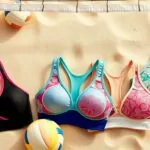As I laced up my volleyball shoes and stepped onto the court, I couldn’t help but notice the stark contrast between my teammates’ uniforms and my own. While the men’s team sported loose, baggy shorts, the women’s uniform consisted of snug, form-fitting spandex bottoms that barely grazed our upper thighs. This observation led me to ponder the reasons behind the seemingly disproportionate sizing of women’s volleyball shorts.
The evolution of women’s sportswear has been a fascinating journey, shaped by a myriad of factors, from functionality and performance to societal perceptions and cultural norms. Today, the modern volleyball uniform for women epitomizes this transformation, with the emphasis on mobility, comfort, and athleticism taking center stage.
Key Takeaways
- Women’s volleyball shorts have become increasingly smaller and tighter over time, primarily for improved range of motion and athletic performance.
- The spandex material used in these shorts is designed to be stretchy and form-fitting, allowing players to move freely without fabric getting in the way.
- The current trend of shorter volleyball shorts has sparked discussions about the balance between functionality and societal perceptions of female athlete attire.
- Brands like REN Athletics offer a range of women’s volleyball spandex shorts in sizes from YM to 3XL, catering to diverse body types and preferences.
- Factors such as moisture-wicking fabrics, customization options, and return policies play a role in the design and purchasing decisions for women’s volleyball shorts.
Historical Context of Volleyball Attire
The evolution of women’s volleyball attire has been a fascinating journey, reflecting the broader changes in sports and societal norms. In the 1970s, female volleyball players typically wore looser basketball-style shorts, covering more of their legs. However, by the mid-1980s, the trend shifted towards high-cut “bun hugger” shorts that provided a more form-fitting look.
This transition to tighter and shorter shorts was influenced by the need for better performance and freedom of movement on the court. As the game became more dynamic and fast-paced, athletes sought attire that allowed for greater agility and flexibility. Design choices were also affected by cultural attitudes and fashion trends in women’s sportswear, which were becoming increasingly form-fitting and revealing.
Evolution of Women’s Sportswear
The evolution of volleyball attire is not an isolated phenomenon, but rather a reflection of the broader changes in women’s sportswear. Over the decades, we have witnessed a gradual shift towards more body-conscious and revealing designs, driven by a desire for greater freedom of movement and the influence of fashion trends.
Key Influences on Design Choices
The design choices for women’s volleyball shorts have been shaped by a variety of factors, including technological advancements in fabric and manufacturing, the need for performance-enhancing features, and the impact of cultural attitudes and societal norms. As the sport has evolved, so too have the expectations and perceptions surrounding the appropriate attire for female athletes.
“The shift in culture is seen in UP’s volleyball team no longer having to do weigh-ins, indicating a change in focus from weight monitoring to overall well-being.”
The historical context of volleyball attire highlights the complex interplay between function, fashion, and societal perceptions. As the sport continues to evolve, it will be interesting to see how the design of women’s volleyball shorts further adapts to meet the needs and preferences of athletes, while also addressing the ongoing athletic shorts controversy and uniform design critiques.
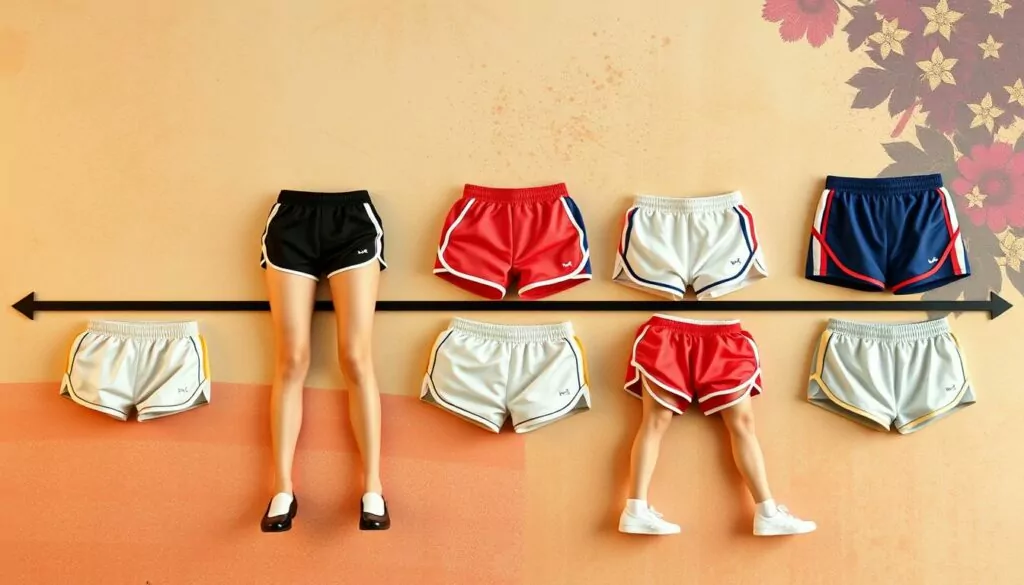
Functionality Over Fashion
When it comes to women’s volleyball shorts, the focus is on functionality rather than pure fashion. The tight-fitting spandex designs prioritize performance and movement over aesthetic appeal. These shorts are engineered to enhance an athlete’s ability to play the game, not simply to look stylish on the court.
Importance of Movement in Volleyball
Volleyball is a dynamic sport that requires quick reflexes, agility, and a full range of motion. The shorts worn by female players are specifically tailored to facilitate these movements. The snug, body-hugging fit allows for unrestrained mobility, enabling players to dive, stretch, and jump with ease. This design not only enhances their athletic performance but also helps prevent injuries from occurring during intense gameplay.
Performance Enhancements from Shorter Styles
The shorter length of women’s volleyball shorts, often reaching just a few inches above the thigh, serves a practical purpose. This design provides better coverage and protection when sliding on the court, reducing the risk of skin abrasions and other injuries. Additionally, the tight-fitting nature of the shorts helps to minimize fabric interference during quick movements, ensuring that players can focus on the game without worrying about clothing adjustments.
While the aesthetic appeal of these shorts may be a point of discussion, the primary consideration is the functional benefits they provide to female volleyball players. The design prioritizes performance, allowing athletes to excel in their sport without compromising comfort or safety.
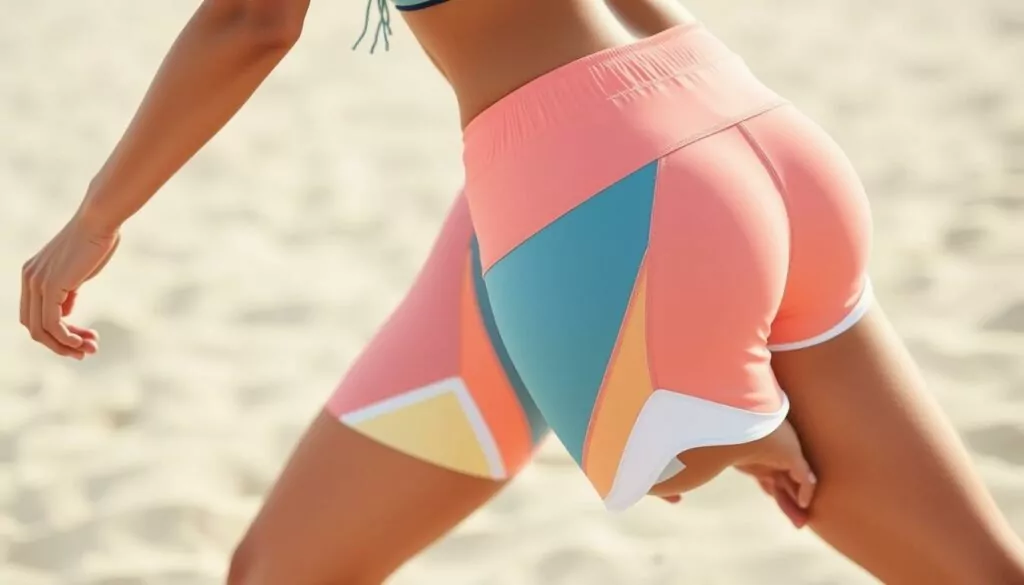
“The tight-fitting nature of these shorts allows for a full range of motion, which is crucial for the quick movements and diving plays that are essential in volleyball.”
| Feature | Benefit |
|---|---|
| Tight, spandex-like material | Enhances mobility and flexibility |
| Shorter length | Reduces risk of skin abrasions during play |
| Body-hugging fit | Minimizes fabric interference for unhindered movement |
Cultural Perceptions of Women in Sports
The design of women’s volleyball shorts has sparked debates about the sexualization of female athletes. Some argue that the revealing nature of the shorts objectifies women, while others view it as a celebration of athletic bodies. Societal attitudes towards female athletes have evolved, with increased focus on their athletic achievements rather than appearance. However, the contrast between men’s and women’s volleyball attire continues to raise questions about gender equality in sports.
Societal Attitudes Toward Female Athletes
In recent years, there have been several high-profile cases that have highlighted the double standards and restrictive dress codes facing female athletes. For example, in 2021, the Norwegian women’s handball team was fined for wearing athletic shorts instead of the required bikini bottoms. Similarly, the Fédération Internationale de Volleyball (FIVB) mandated that female beach volleyball competitors wear two-piece bikinis, while male athletes were required to wear shorts above the knee.
These incidents have sparked outrage and drawn attention to the ongoing issue of sexualization in sports. Many argue that the focus on female athletes’ appearance, rather than their athletic abilities, serves to objectify and undermine their achievements.
Shifting Norms and Expectations
- In 2016, the International Volleyball Federation changed its regulations to permit players to wear hijabs, aiming to increase inclusivity within the sport.
- In 2012, the Badminton World Federation’s attempt to enforce a skirt-wearing rule on female players to promote a “more feminine appearance” was met with backlash and eventually failed.
- A report from the Women’s Sports Foundation suggests that cultural stigma and lack of access contribute to lower participation rates among girls in sports.
These examples highlight the shifting norms and expectations surrounding gender equality in athletics. As society’s attitudes towards female athletes evolve, there is a growing emphasis on celebrating their athletic prowess and promoting inclusivity in sports.
“Briana Scurry, a retired soccer player with three World Cups and two Olympic gold medals, recounted instances where female athletes had to wear ill-fitting uniforms intended for male teams due to sponsor limitations, showcasing disparities in uniform options for women athletes.”
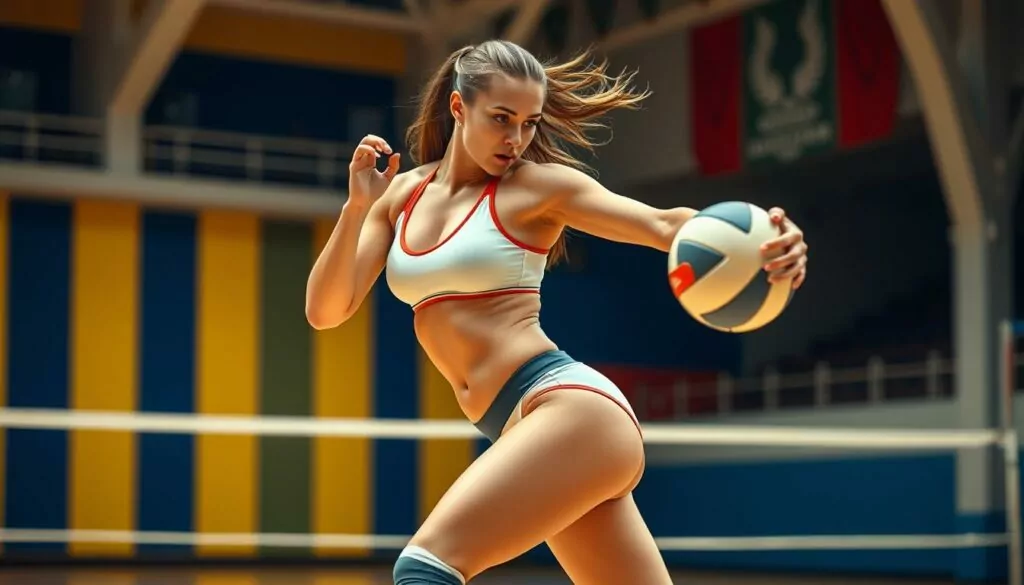
Comfort and Fit Considerations
When it comes to choosing the right volleyball attire, the comfort and fit of the garments play a crucial role in the performance and confidence of female athletes. The tight-fitting spandex shorts worn by many female volleyball players are designed to provide a “buttery soft feel” and are crafted from premium, lightweight, breathable, and antimicrobial fabrics. This tight fit helps prevent the shorts from riding up or shifting during play, reducing distractions and allowing the athletes to focus on the game.
How Fabric and Cuts Affect Performance
The fabric and cut of volleyball shorts can significantly impact an athlete’s comfort and overall performance. Synthetic fabrics like spandex offer a snug, form-fitting design that enhances range of motion and minimizes chafing. Many female volleyball players report feeling more comfortable and confident in these tight-fitting shorts, as they provide a secure and streamlined silhouette during intense physical activity.
The Role of Personal Preference
- While the current trend in women’s volleyball is towards shorter, tighter shorts, personal preference plays a significant role in an athlete’s choice of attire.
- Some players may prefer the added coverage and comfort of longer shorts or leggings, while others embrace the freedom of movement offered by the more revealing spandex styles.
- Ultimately, the decision to wear athletic shorts or other female athlete attire is a personal one, influenced by factors such as individual comfort, confidence, and performance needs.
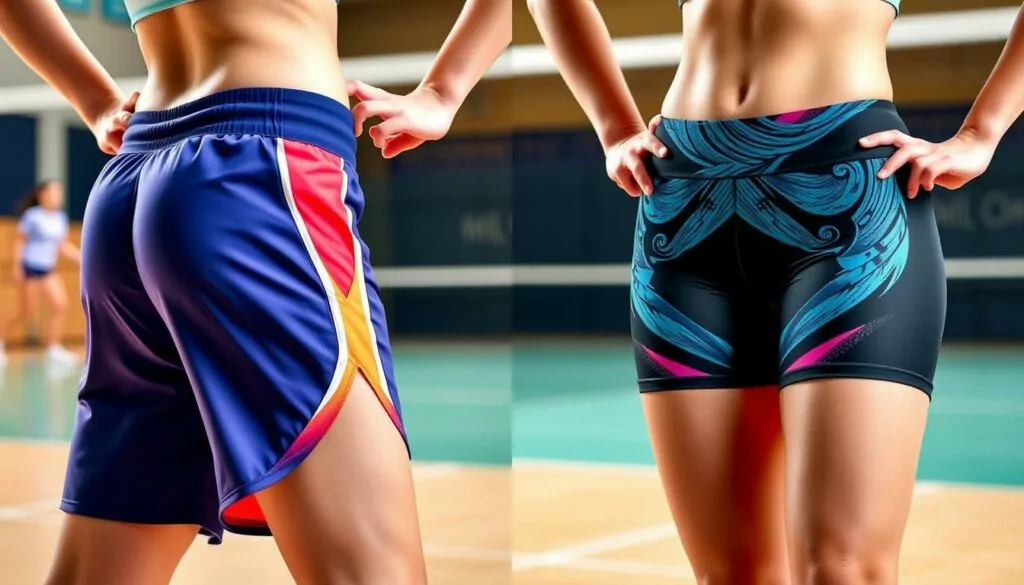
“The most important factor is finding what makes you feel most confident and comfortable on the court. Whether that’s a longer short or a shorter one, the focus should be on your personal preference and what allows you to perform at your best.”
Comparison with Men’s Volleyball Shorts
When it comes to volleyball uniforms, the stark contrast between men’s and women’s attire is often a topic of discussion. Men’s volleyball shorts are typically longer and looser, covering more of the athlete’s legs. This design difference is partly due to the physiological distinctions between male and female players.
The emphasis in men’s volleyball tends to be on power and strength, with players often relying on explosive jumps and hard-hitting spikes. In contrast, women’s volleyball places a greater focus on agility and finesse, with a premium on quick movements and precise ball control. These differing playing styles influence the purpose and functionality of the respective uniforms.
Societal Standards for Male vs. Female Attire
The disparity in volleyball shorts lengths also reflects the broader societal standards and expectations surrounding the attire of male and female athletes. There is often a double standard where women’s uniforms are expected to be more revealing or “feminine,” while men’s uniforms are afforded more coverage and a more “professional” appearance.
This discrepancy has led to discussions about gender equality in athletics and the need to re-evaluate the criteria used in uniform design critiques. As the landscape of women’s sports continues to evolve, there is a growing call for a more equitable approach to athletic apparel that prioritizes functionality, comfort, and personal preference over societal norms.
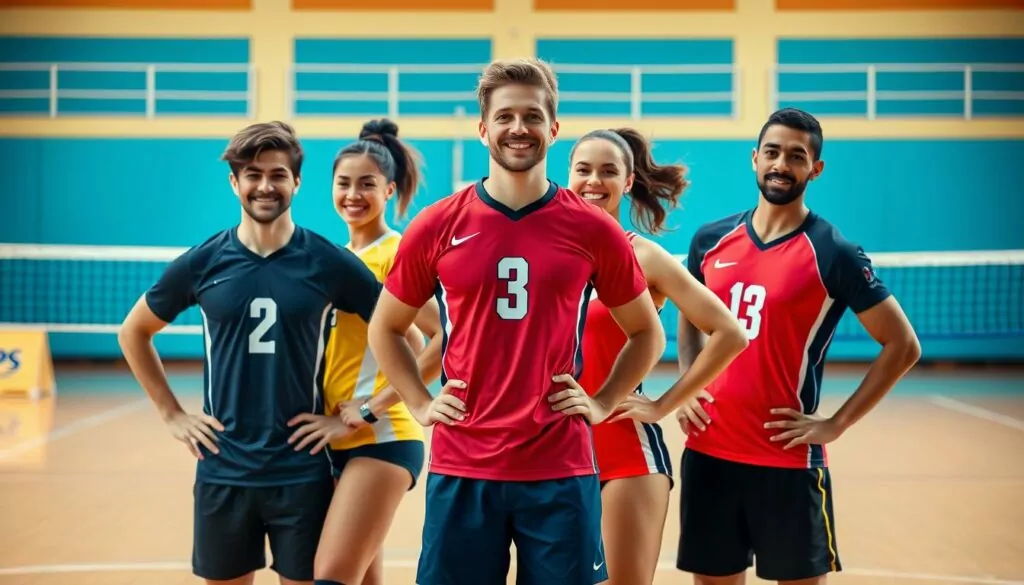
“The design of women’s volleyball shorts seems to be intentionally geared towards leering at butts.”
The ongoing debate surrounding the length and style of women’s volleyball shorts highlights the complex interplay between performance, cultural perceptions, and the need for a more holistic approach to athletic wear design.
Influence of Sponsorships and Branding
As the world of women’s volleyball continues to evolve, the influence of major sports brands and their sponsorship deals has become increasingly significant. Brands like Nike have developed specialized lines of volleyball shorts, such as the Nike Pro spandex shorts, tailored to the unique demands of the sport. These sponsorships play a crucial role in shaping the attire worn by professional and collegiate volleyball players, with brands seeking prominent display of their logos on players’ uniforms.
Major Sports Brands and Their Designs
The standardization of the current style of women’s volleyball shorts can be largely attributed to the impact of these sponsorship deals. Sports brands work closely with athletes and teams to create uniforms that not only meet the functional requirements of the game but also align with the brand’s aesthetic and marketing objectives. This has led to a more homogenized approach to volleyball attire, with many players donning similar skimpy sports apparel that has become the norm in the sport.
How Sponsors Shape Athletes’ Attire Choices
The athletic shorts controversy surrounding women’s volleyball has been influenced by the preferences and demands of the sport’s sponsors. Brands seek to capitalize on the visual appeal of the athletes, often pushing for shorter and more revealing styles that can generate greater attention and publicity. This has led to an ongoing debate about the balance between functionality, comfort, and the sexualization of female athletes in sports.
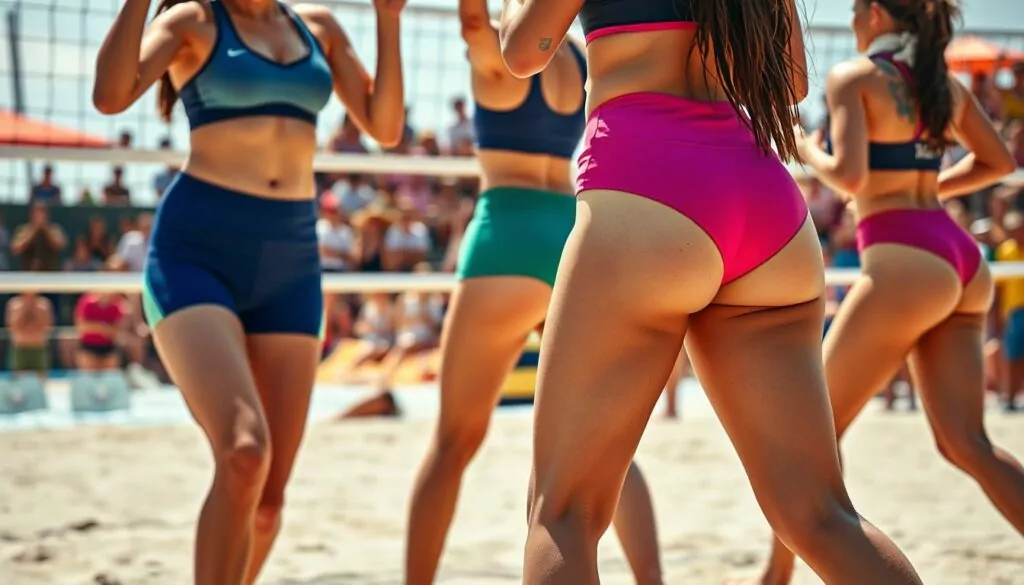
“Sponsors and executives use sex appeal in sports marketing to promote players’ sexuality, enhance publicity, and increase financial support.”
As the industry becomes more competitive, the pressure to stand out and attract new sponsors has contributed to the proliferation of skimpy sports apparel and the athletic shorts controversy in women’s volleyball. The influence of branding and sponsorships on the design of athletes’ attire remains a complex and often contentious issue, requiring a critical examination of the underlying values and priorities shaping the sport.
Athlete Feedback on Short Styles
Many professional [female athlete attire] volleyball players express satisfaction with the current short styles, citing improved performance and comfort. Some athletes appreciate the ability to [volleyball uniform regulations] express their personality through colorful and patterned shorts. However, concerns have been raised about the potential for unwanted attention and the pressure to conform to a certain body image.
Insights from Professional Players
Several top volleyball athletes have shared their perspectives on the short styles. “The tight shorts allow me to move freely and focus on my game,” explains Alison Cerutti, a two-time Olympic gold medalist. Ren Athletics ambassador Jordyn Poulter adds, “I love being able to showcase my personal style with fun shorts designs.”
Common Concerns and Suggestions
While many players appreciate the current uniforms, some have voiced concerns about the potential for unwanted attention and body image pressures. As Paige Bueckers, a NCAA champion, notes, “There’s a fine line between feeling confident and feeling objectified.” Some athletes advocate for more diverse uniform options to accommodate different preferences and body types.
“There’s a fine line between feeling confident and feeling objectified.”
The push for athletes to have more say in their competition clothing has been supported by experts in the field to allow for more choices and empowerment for [female athlete attire] female volleyball players.
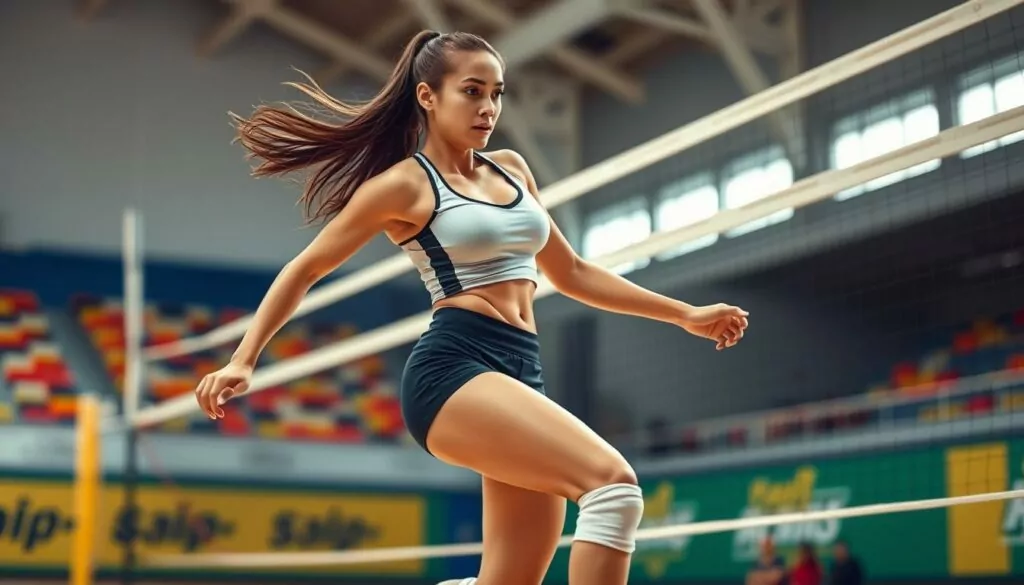
Trends in Women’s Sports Apparel
The popularity of skimpy sports apparel, particularly the controversy surrounding athletic shorts in women’s volleyball, has had a significant impact on broader trends in women’s sports fashion. The rise of athleisure wear has been fueled in part by the crossover appeal of the tight, form-fitting spandex shorts commonly seen on volleyball courts.
The Rise of Athleisure Wear
Spandex shorts, once primarily confined to the volleyball court, have become a staple of everyday fashion. The comfort and flexibility of these garments have made them increasingly desirable for a wide range of activities beyond just sports. This surge in athleisure wear has led to a growing demand for comfortable, performance-oriented sportswear that can seamlessly transition between the gym and the street.
Impact of Popularity on Design
The widespread adoption of skimpy sports apparel, like the athletic shorts controversy in women’s volleyball, has influenced the design choices of major sports brands. To cater to the growing demand for form-fitting, fashionable athletic wear, these companies have expanded their offerings to include more figure-hugging, lightweight, and breathable options. This shift has not only impacted the aesthetics of women’s sportswear but also the functional aspects, such as improved mobility and breathability.
The continued popularity of the short, tight volleyball shorts has become a testament to the changing attitudes and preferences of female athletes and sports enthusiasts. As the industry responds to these evolving trends, the future of women’s sports apparel promises to be a blend of functionality, comfort, and style.
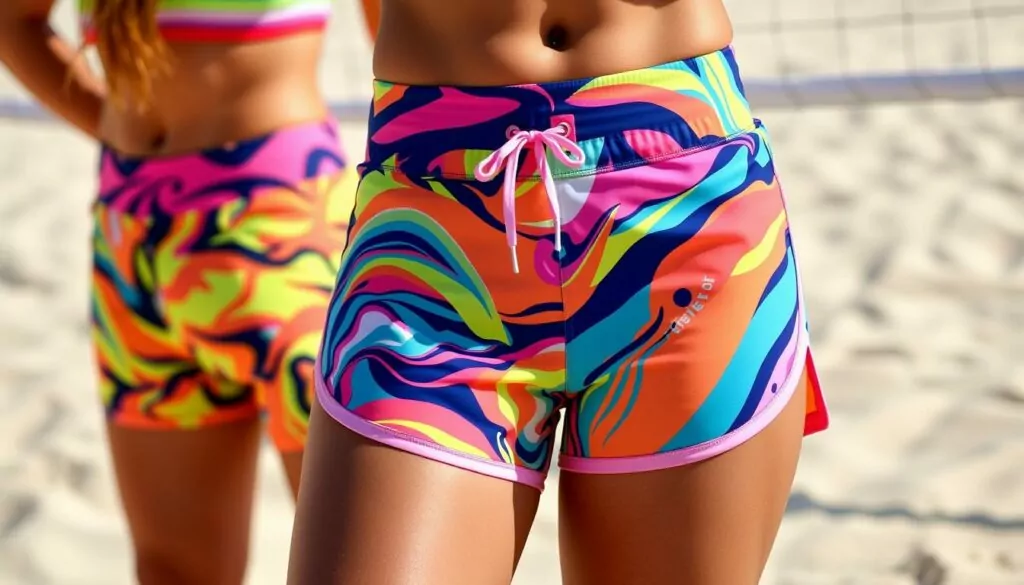
Regional Variations in Short Length
As the sport of volleyball has spread globally, the length and style of women’s volleyball shorts have evolved to reflect the diverse cultural norms and preferences across different regions. While international competitions have led to some standardization of volleyball uniform regulations, there are still noticeable variations in the length and fit of shorts worn by female players around the world.
Differences in Style Across Countries
In certain countries, volleyball players may wear longer and looser-fitting shorts due to cultural attitudes toward modesty and body exposure in sports. For example, in some Middle Eastern and Asian nations, female athletes may opt for bottoms that provide more coverage, aligning with societal expectations of appropriate sportswear for women. Conversely, in regions like North America and Europe, shorter and tighter-fitting volleyball shorts have become more widely accepted and even embraced as the norm.
Cultural Influences on Athletic Wear
The varying lengths of volleyball shorts can be attributed to the cultural perceptions of sports and athletic wear in different societies. In some cultures, there may be a stronger emphasis on modesty and preserving traditional gender roles, leading to a preference for more conservative uniform designs. However, in other regions, the cultural perception of women in sports has evolved, allowing for greater flexibility and individualization in athletic fashion choices.
Ultimately, the regional variations in volleyball uniform regulations and the length of shorts reflect the complex interplay between cultural norms, societal attitudes, and the ongoing evolution of women’s participation in sports.
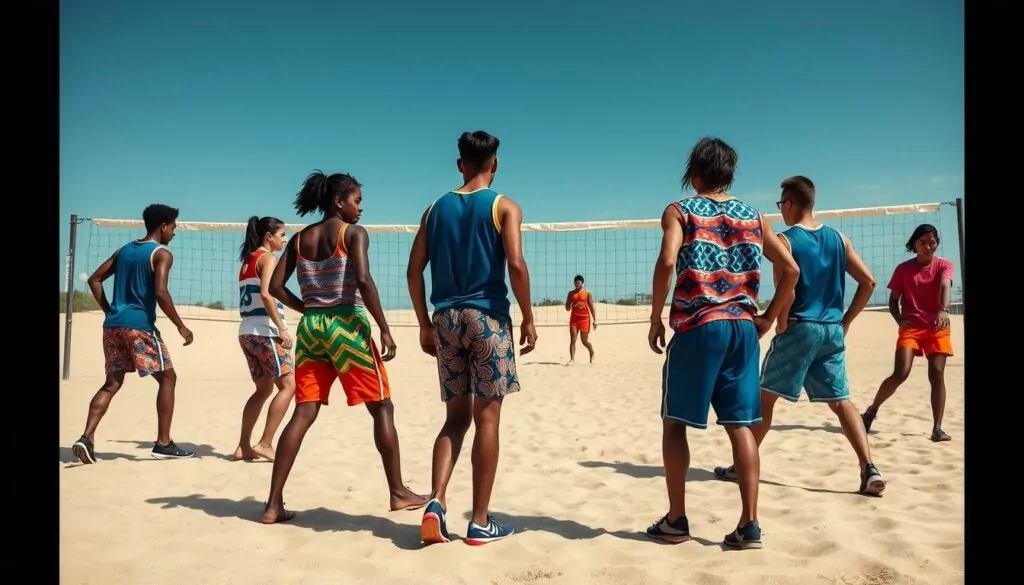
The Role of Media and Representation
The media’s portrayal of female athletes has long been a contentious issue, often focusing more on their physical appearance rather than their athletic prowess. This trend has sparked discussions around the sexualization in sports and the need for greater gender equality in athletics.
Studies have shown that women represent 40% of professional athletes, yet they only receive 4% of sports media coverage. This imbalance perpetuates the notion that female athletes are not as deserving of attention and recognition as their male counterparts. The media’s obsession with the physical attributes of female athletes can also contribute to harmful societal attitudes and unrealistic body standards.
Portrayal of Female Athletes in Media
The sports media industry’s focus on female athletes’ bodies over their skills has led to a culture where women’s sporting events receive less attention and recognition compared to men’s events. This objectification can have detrimental effects on the mental health and self-worth of female athletes, with 45% struggling with eating disorders due to the unhealthy obsession with weight.
Impact of Social Media on Trends
The rise of social media has both amplified and challenged these issues. While some female athletes use their platforms to challenge stereotypes and promote body positivity, others face increased scrutiny and objectification from online audiences. The accessibility of social media has also allowed for greater discussion and awareness around the need for more equitable representation and treatment of female athletes.
As the gender equality in athletics movement continues to gain momentum, it will be crucial for the media to shift its focus towards celebrating the athletic achievements and capabilities of female athletes, rather than their physical appearance. This shift in representation can have a profound impact on inspiring young girls to pursue their athletic dreams and challenging societal norms.
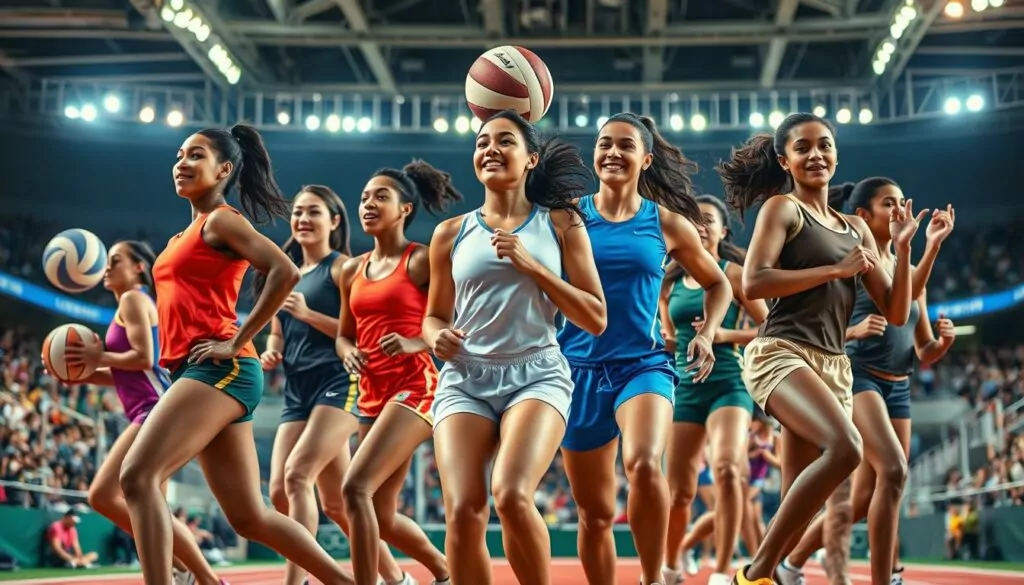
“The media’s representation of female athletes has created a societal pressure on women to expose their bodies for recognition, potentially impacting their self-worth and leading to concerns related to eating disorders and mental health issues.”
Future of Women’s Volleyball Shorts
As the athletic shorts controversy and uniform design critiques continue, the future of women’s volleyball shorts is poised for some exciting changes. Ongoing innovations in fabric technology are likely to influence future volleyball short designs, potentially offering even better performance features.
There’s a growing push for more diverse uniform options to accommodate different body types and personal preferences. Changing societal attitudes may lead to re-evaluations of current designs, with a potential shift towards balancing performance needs with concerns about objectification and inclusivity.
Innovations in Fabric and Design
Advancements in athletic wear fabrics are revolutionizing the way volleyball shorts are designed. New moisture-wicking, breathable, and stretchy materials can provide enhanced comfort and freedom of movement for players. Designers are also exploring innovative cut and silhouette options to cater to a wider range of body shapes and personal preferences.
Predictions for Changing Attitudes
- Increased awareness of the athletic shorts controversy and uniform design critiques may prompt sports governing bodies to revisit their regulations.
- Player feedback and advocacy could drive a shift towards more inclusive and empowering volleyball attire.
- Growing societal emphasis on body positivity and gender equality could influence the design and perception of women’s volleyball shorts.
As the industry continues to evolve, the future of women’s volleyball shorts is poised to strike a better balance between performance, comfort, and social consciousness. With open dialogue and thoughtful design choices, the sport can continue to empower and celebrate female athletes in a meaningful way.
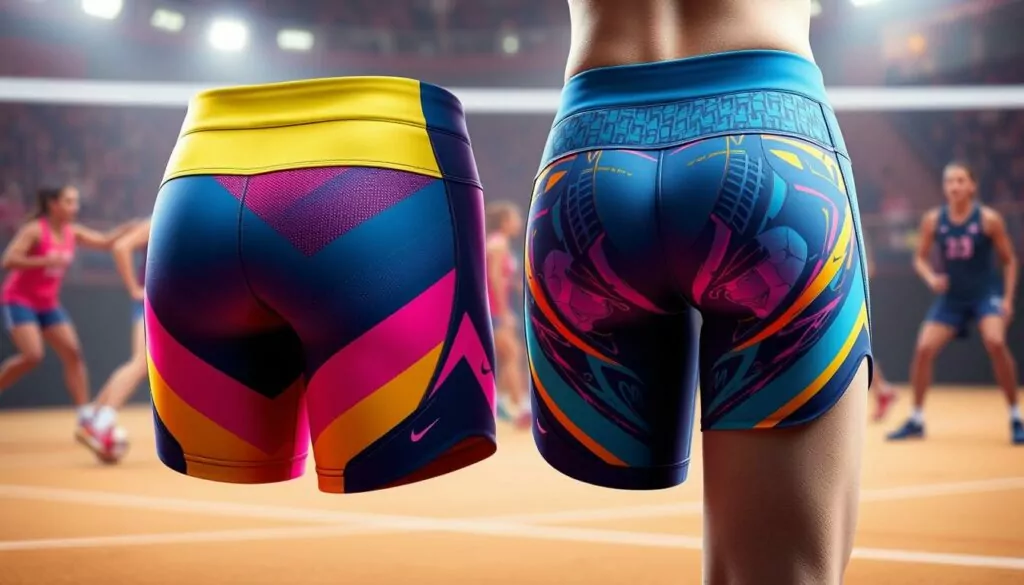
Conclusion: Balancing Performance and Comfort
The design of women’s volleyball shorts reflects a complex interplay of performance requirements, athlete preferences, cultural norms, and marketing influences. While the current style offers functional benefits, ongoing discussions about “why are women’s girls volleyball shorts so small” and “gender equality in athletics” are crucial. Encouraging open dialogue among athletes, coaches, and governing bodies can help ensure that uniform choices prioritize both performance and comfort while respecting diverse perspectives and promoting inclusivity in the sport.
Final Thoughts on Design Choices
As we’ve explored, the evolution of women’s volleyball attire has been shaped by a variety of factors, from the practical needs of the game to societal expectations. While the tight, short shorts may provide certain advantages, they also raise questions about body image, sexualization, and the need to balance athletic function with personal comfort. Ultimately, the goal should be to empower female athletes to feel confident and supported, regardless of the design choices.
Encouraging Open Dialogue Among Athletes
By fostering open and transparent discussions among volleyball players, coaches, and administrators, we can work towards uniform designs that meet the diverse needs and preferences of the athletes. This dialogue should encourage athletes to voice their concerns, share their experiences, and contribute to the decision-making process. Only by listening to the voices of those who wear the uniforms can we truly create an environment that prioritizes both performance and personal comfort in the sport of women’s volleyball.




